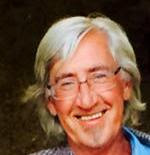EILEEN AROON, JOE HEANEY, DYLAN & HANDEL
One of the snags with the way Blogger works is that if a reader of this blog sends in a Comment on an old posting, it appears only underneath that posting - so other readers don't see it, even though it's a fresh Comment, unless they happen to be looking at the same old posting. I often wish it were otherwise. Recently, I've wished it particularly, because lately 'Elmer Gantry' has sent in a series of interesting Comments centred around the song 'Eileen Aroon' (which Dylan performed so beautifully, and with such rigour, back in the early days of the Never-Ending Tour) - but he has attached them to a post I published five years ago...
So for anyone who may be interested but who checks only the most recent items on this blog, I direct you here, for Comments that say more about 'Eileen Aroon', Joe Heaney, Handel's touching comment on the song and a conjunction between George Frideric and Bob.
So for anyone who may be interested but who checks only the most recent items on this blog, I direct you here, for Comments that say more about 'Eileen Aroon', Joe Heaney, Handel's touching comment on the song and a conjunction between George Frideric and Bob.















4 Comments:
This is a discussion of Beethoven's setting of 'Robin Adair' (the Scottish version of 'Eileen Aroon"]taken from the fascinating website:
http://www.justanothertune.com/html/ea-list.html
B03. 1814 (1860), Ludwig van Beethoven - "Irische Volksweise (Robin Adair)"
In 1814 Beethoven wrote an arrangement of "Robin Adair" for George Thomson. As far I could find out it wasn't published at that time. Only 46 years later it was included in:
Volkslieder für eine oder mehrere Singstimmen, Violine, Violoncello u. Pianoforte, componirt von Ludwig van Beethoven. Nachgelassenes Werk; herausgegeben von Franz Espagne, Heft 2, C. F. Peters, Leipzig & Berlin 1860, (WoO 157), No. 7, p. 2 (available as a pdf-file at IMSLP, but the quality is not so good. They also have a later edition [Breitkopf & Härtel's Beethovens Werke, Serie 24, Lieder, No. 259, Volkslieder, here p. 18] that is much better readable)
Burns' "Had I A Cave" was only added as an alternate lyric. Instead for some reason George Thomson had also sent him the text of "Cromlet's Lilt":
26. "Irische Volksweise (Robin Adair)", tune and first verse from: Ludwig van Beethoven, Volkslieder für eine oder mehrere Singstimmen, Violine, Violoncello u. Pianoforte, 1860, No. 7
This is in fact a much older song that was usually sung to a different melody (see SMM II, No. 199, p. 207; and notes on p. 185 - 187; see also Roxburghe 3.647, n. d., at the English Broadside Ballad Archive). Interestingly Robert Chambers in his Scottish Songs (Vol. 2, 1829, p. 385) also gives "Robin Adair" as the tune for "Cromlet's Lilt". At least the meter and phrase structure of both songs are quite similar. Chambers doesn't tell us when and where tune and melody were combined but I wonder if "Cromlet's Lilt" also had some influence on the development of the Scottish "Robin Adair".
Beethoven did piano trio (piano, violin & cello) variations of a lot of Irish folk songs:
http://polleymusiclibraryscadenza.blogspot.com/2009/03/beethovens-irish-songs.html
I've often tried to find good copies of these...
Kieran
Might be worth checking some of these out:
http://classicalmusicmayhem.freeforums.org/viewtopic.php?t=1756&p=51378
Talking about classical musicians, I have often thought that when the folk revival is being discussed insufficient credit is given to people like Percy Grainger and Ralph Vaughan Williams, who collected many of the songs which the later English revivalists sang.
Reading books like Colin Harper's otherwise excellent biography of Bert Jansch, one would think that Bert Lloyd was the first folk song collector in Britain.
Also, little reference is made to the brilliant settings of folk songs by people like Grainger, Vaughan Williams and (most impressively, perhaps) Benjamin Britten.
Britten's folk song settings also inspired Copland later settings of American folk music, well discussed, recently, by Sean Wilentz
Post a Comment
<< Home